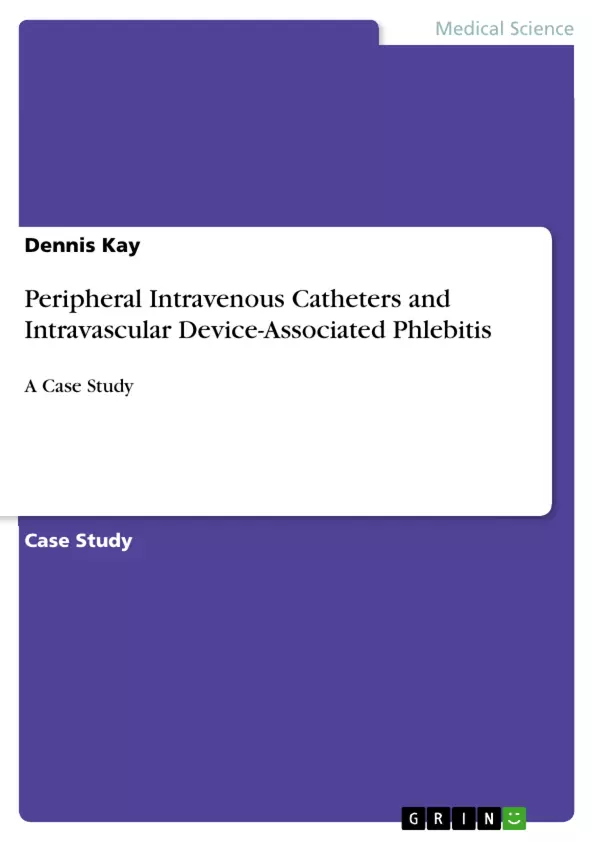Peripheral intravenous catheters have long been used to deliver fluids and medications into hospitalized patients, especially in acute cases. The use of peripheral intravenous catheterization (PIVC) is associated with a complication known as phlebitis - that is, vein inflammation. Besides infection, mechanical and chemical factors have been attributed to the occurrence of phlebitis. Generally, phlebitis causes PIVC failure, pain, increased hospital stay, and undermines future PIVC, etc. Phlebitis resulting from infection could lead to bloodstream and subsequent systemic infection.
The current measures for reducing the risk of intravascular device-associated phlebitis, such as the use of catheter materials that minimize injury and discomfort, are not enough. Considering that peripheral intravenous catheters are used in up to 70% of hospitalized patients, the need to find a best-practice approach to catheterization cannot be stressed enough. This book outlines the risk factors and symptoms of phlebitis and proposes a best-practice approach for preventing intravascular device-associated phlebitis.
This ebook was created by Denis Kay, an administrator of www.havardessays.com. You can request to have a similar ebook, or any other nursing paper, written for you by visiting and placing an order on the stated website.
Inhaltsverzeichnis (Table of Contents)
- Introduction
- Case Analysis
- Discussion
Zielsetzung und Themenschwerpunkte (Objectives and Key Themes)
This case study aims to analyze the risk factors and symptoms of intravascular device-associated phlebitis and propose a best-practice approach for its prevention.
- Risk factors for intravascular device-associated phlebitis
- Symptoms of intravascular device-associated phlebitis
- Best practices for preventing intravascular device-associated phlebitis
- The importance of clinical knowledge and adherence to good clinical practice
- The role of education and patient involvement in preventing phlebitis
Zusammenfassung der Kapitel (Chapter Summaries)
- Introduction: This section introduces the topic of intravascular device-associated phlebitis and highlights the importance of finding a best-practice approach to catheterization to reduce the risk of this complication.
- Case Analysis: This section presents a case study of Mrs. Ethel Ritter, an 85-year-old woman at high risk of developing intravascular device-associated phlebitis due to her age, smoking history, and recent intravenous catheterization. The section analyzes the risk factors associated with her condition.
- Discussion: This section discusses various strategies for preventing intravascular device-associated phlebitis, including routine catheter replacement, education of patients on symptoms, appropriate aseptic techniques, and the use of sugar-based fluids instead of potassium and chloride salts.
Schlüsselwörter (Keywords)
Intravascular device-associated phlebitis, peripheral intravenous catheters, risk factors, symptoms, best practices, prevention, clinical knowledge, good clinical practice, patient education, aseptic techniques, catheter replacement, sugar-based fluids.
- Citation du texte
- MSc. Dennis Kay (Auteur), 2015, Peripheral Intravenous Catheters and Intravascular Device-Associated Phlebitis, Munich, GRIN Verlag, https://www.grin.com/document/356142



